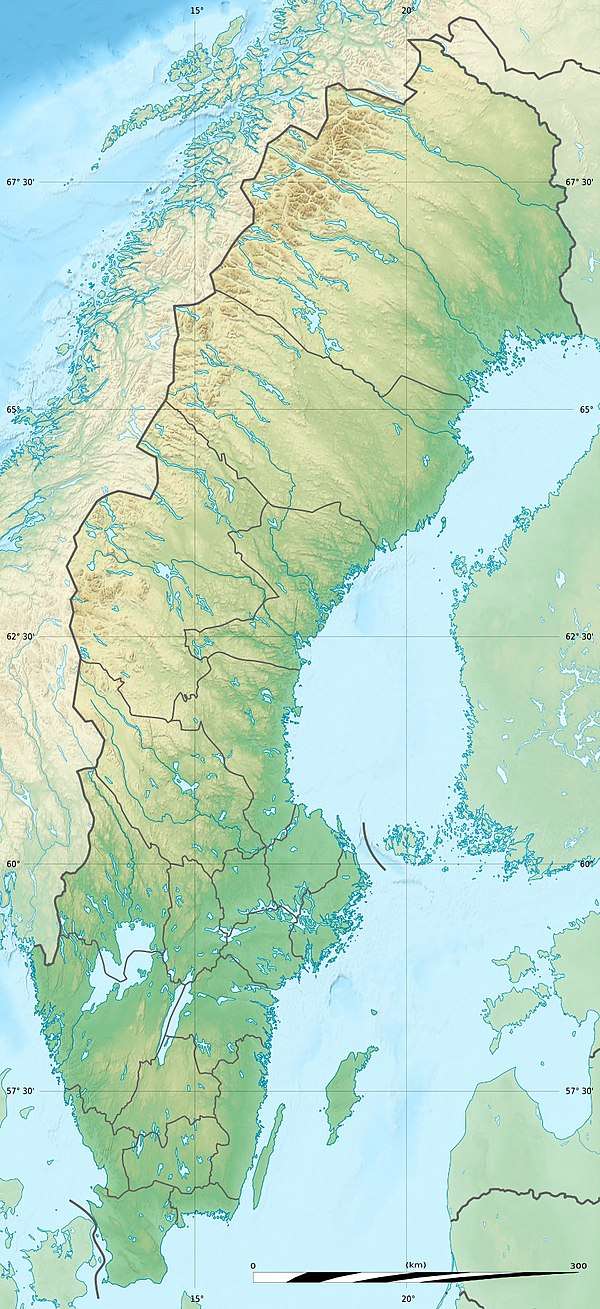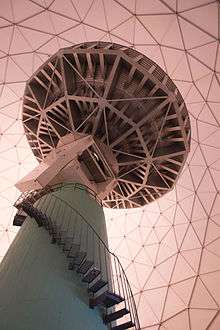Onsala Space Observatory
Onsala Space Observatory (OSO), the Swedish National Facility for Radio Astronomy, provides scientists with equipment to study the Earth and the rest of the Universe. The observatory operates two radio telescopes in Onsala, 45 km south of Gothenburg, and takes part in several international projects. Examples of activities:
- The 20 and 25 m telescopes in Onsala: Studies of the birth and death of stars, and of molecules in the Milky Way and other galaxies.
- LOFAR station: The Swedish station in the international radio telescope LOFAR is located at the observatory.
- VLBI: Telescopes in different countries are linked together for better resolution ("sharper images").
- ALMA, e-VLBI, Herschel Space Observatory, SKA: Developing and using new radio astronomical facilities.
- APEX: Radio telescope in Chile for sub-millimetre waves. Research about everything from planets to the structure of the Universe.
- Odin: Satellite for studies of, e.g., the Earth's atmosphere and molecular clouds in the Milky Way.
- Space geodesy: Radio telescopes (VLBI) and satellites (GPS) are used to measure movements in Earth's crust and water vapour in the atmosphere.
- Receiver development: Laboratories for development of sensitive radio receivers.
- Event Horizon Telescope: A project to create a large telescope array for observing the immediate environment of the Milky Way's supermassive black hole Sagittarius A*, et.c.
The 25-metre telescope | |
| Alternative names | Swedish National Facility for Radio Astronomy |
|---|---|
| Organization | Chalmers University of Technology |
| Location | Onsala peninsula, Kungsbacka Municipality, Sweden |
| Coordinates | 57°23′35″N 11°55′04″E |
| Altitude | 20 m (66 ft) |
| Established | 1949 |
| Website | www |
| Telescopes | Onsala Space Observatory 20 m telescope Onsala Space Observatory 25 m telescope Onsala Space Observatory LOFAR station |
 Location of Onsala Space Observatory | |
Onsala Space Observatory was founded in 1949 by professor Olof Rydbeck. The observatory is hosted by Department of Earth and Space Science at Chalmers University of Technology, and is operated on behalf of the Swedish Research Council.
25-metre telescope
The 25.6 m diameter, polar mount decimeter-wave telescope in Onsala is equipped with receivers for frequencies up to 7 GHz. It is used for astronomical VLBI observations. It is also operated as a single dish for studies of molecular clouds in the Galaxy. The telescope was built in 1963.
20-metre telescope


The 20 m diameter millimetre wave telescope in Onsala is equipped with receivers for frequencies up to 116 GHz. It is used for observations of millimetre wave emission from molecules in comets, circumstellar envelopes, and the interstellar medium in the Galaxy and in extragalactic objects. The telescope is enclosed in a radome of diameter 30 m.[1]
It is also used for astronomical VLBI observations of star forming regions, radio stars, and active galactic nuclei, and for geodetic VLBI observations to study e.g. crustal dynamics and polar motion. The telescope was built in 1975-76 and upgraded in 1992.
It is also used, as part of the European and worldwide networks, for astronomical Very Long Baseline Interferometry (VLBI) observations of star forming regions, radio stars, and active galactic nuclei, and for geodetic VLBI observations to study e.g. crustal dynamics and polar motion.
Receivers
The telescope is equipped with the following receivers:
| Frequency range | Receiver temperature | Receiver type | Polarization |
|---|---|---|---|
| 2.2–2.4 GHz | 60 K | HEMT amplifier | Single |
| 8.2–8.4 GHz | 80 K | HEMT amplifier | Dual |
| 18.0–26.0 GHz | 30 K | HEMT amplifier | Dual |
| 26.0–36.0 GHz | 50 K | HEMT amplifier | Single |
| 36.0–49.8 GHz | 50 K | HEMT amplifier | Dual |
| 85–116 GHz | 80–130 K | SIS mixer | Single |
LOFAR station

The Swedish station in the international radio telescope LOFAR is located at Onsala Space Observatory. It was completed in 2011.[2]
Nordic ALMA node
The Onsala Space Observatory currently hosts the Nordic ALMA node, which is part of the European ALMA regional centre (ARC). The Nordic ALMA node provides face-to-face support for any astronomer that wants to use the ALMA telescope and primarily supports the Nordic scientific community.[3]
References
- Rydbeck, O.E.H.; Ronnang, B.; Hansson, B.; Ellder, J.; Hjalmarson, A.; Kollberg, E.; d'Amato, Richard (1977). "The Onsala 20 M Millimeter Wave Radio Telescope". Proc. 7th European Microwave Conference: 424–427. doi:10.1109/EUMA.1977.332461.
- "Education minister to open Onsala's LOFAR station (Chalmers press release), 30 June 2011". LOFAR Sweden consortium.
- "Nordic ARC node".
External links
| Wikimedia Commons has media related to Onsala Space Observatory. |
- Onsala Space Observatory – official website
- Nordic ARC node - Home page